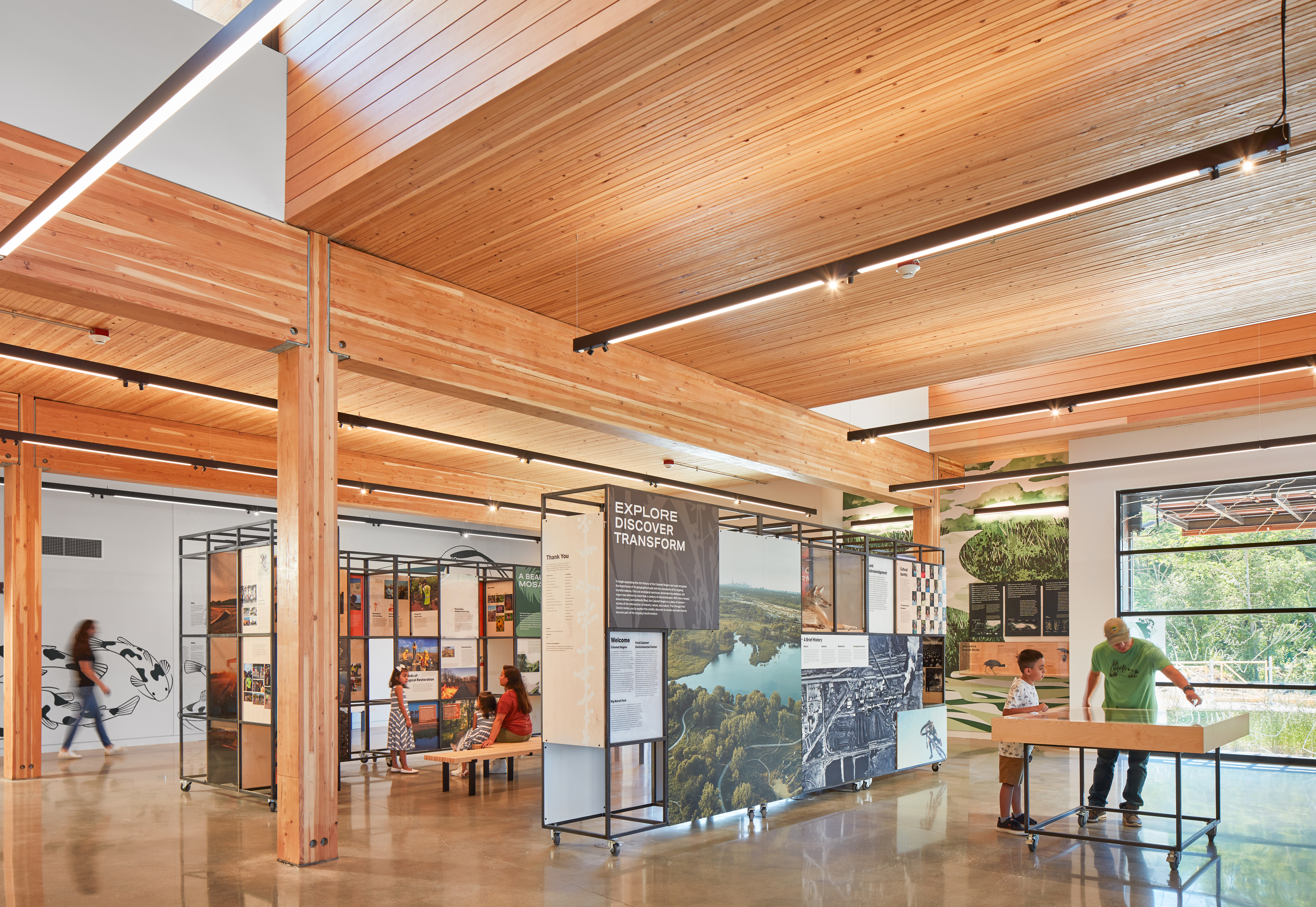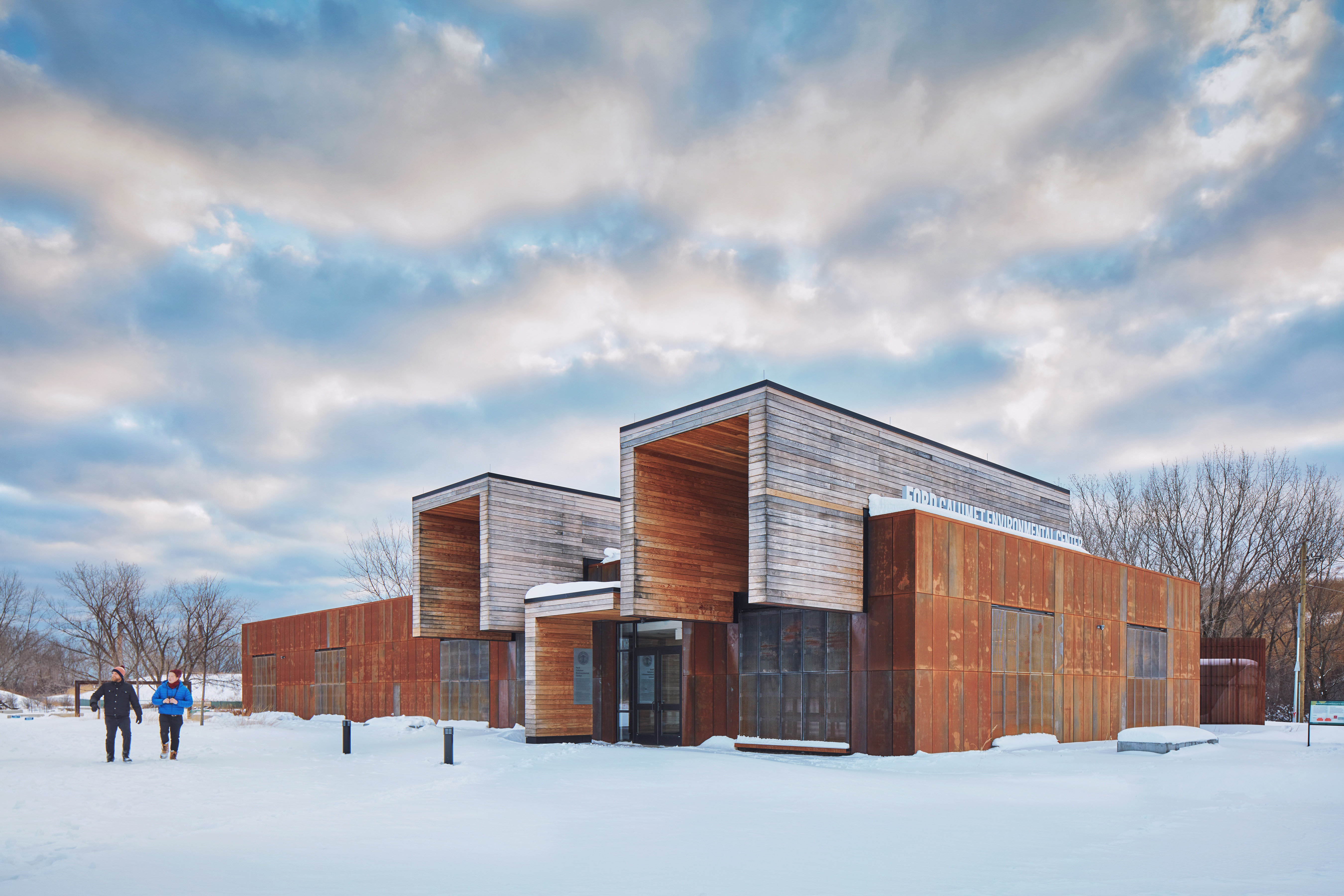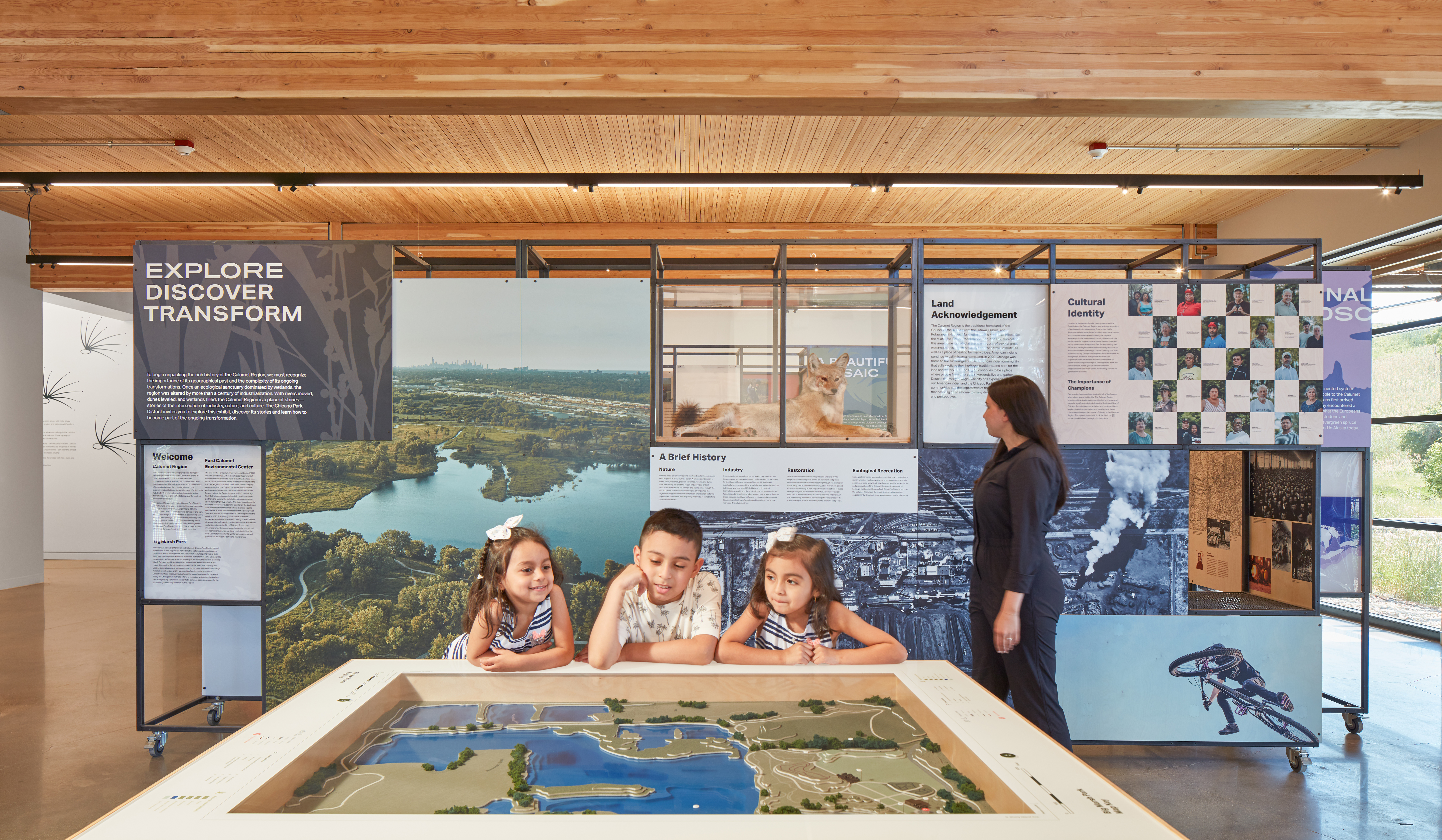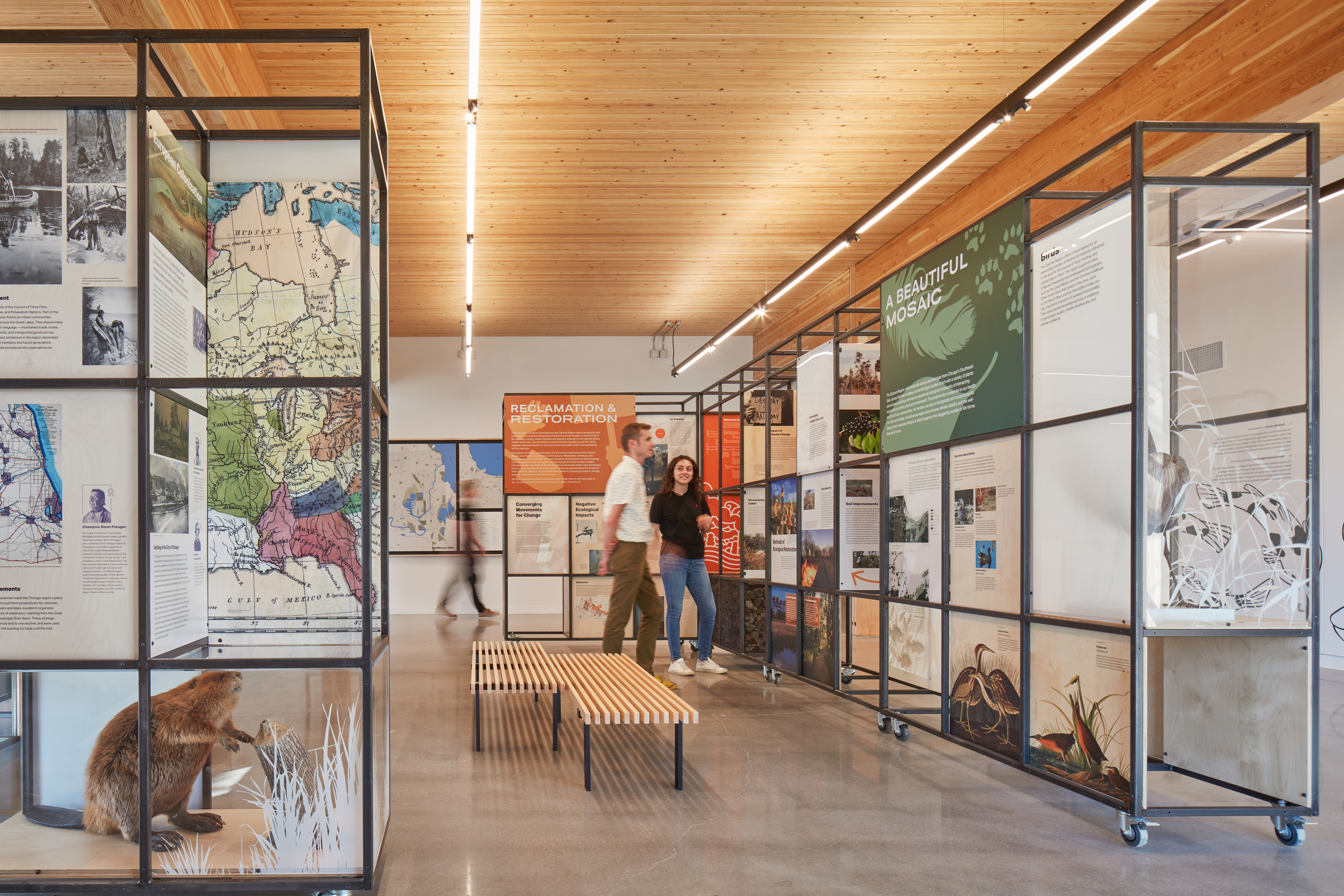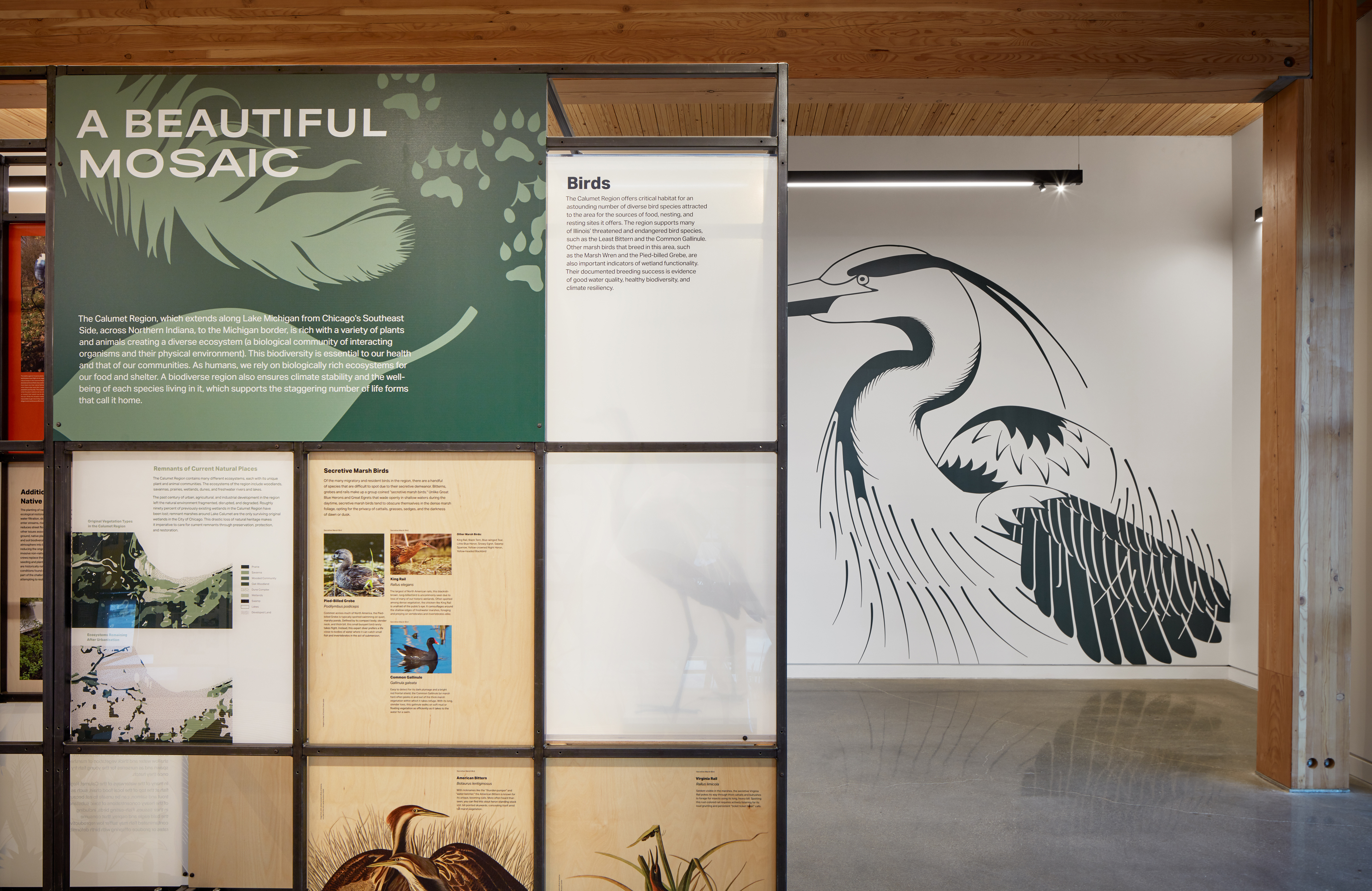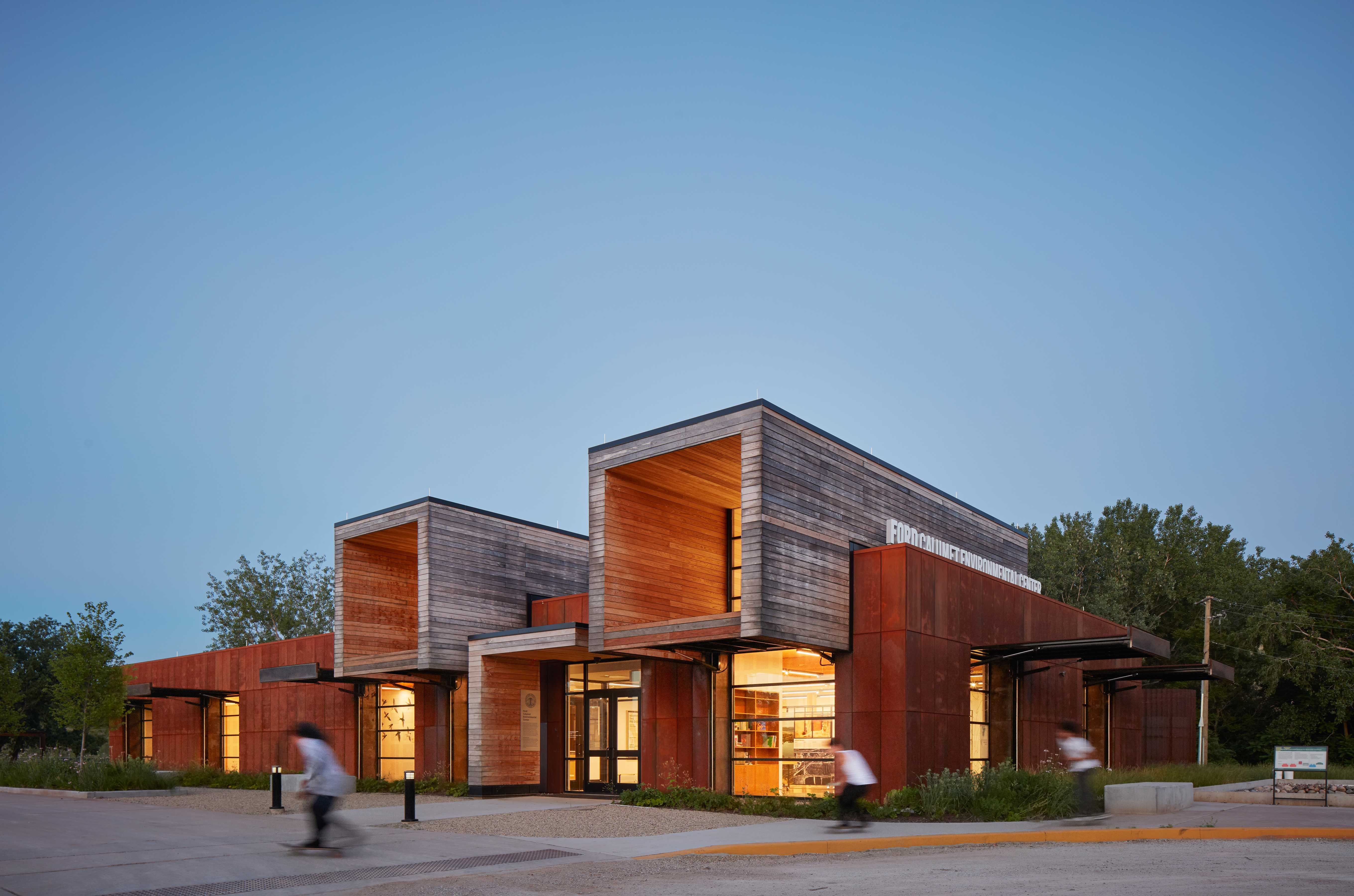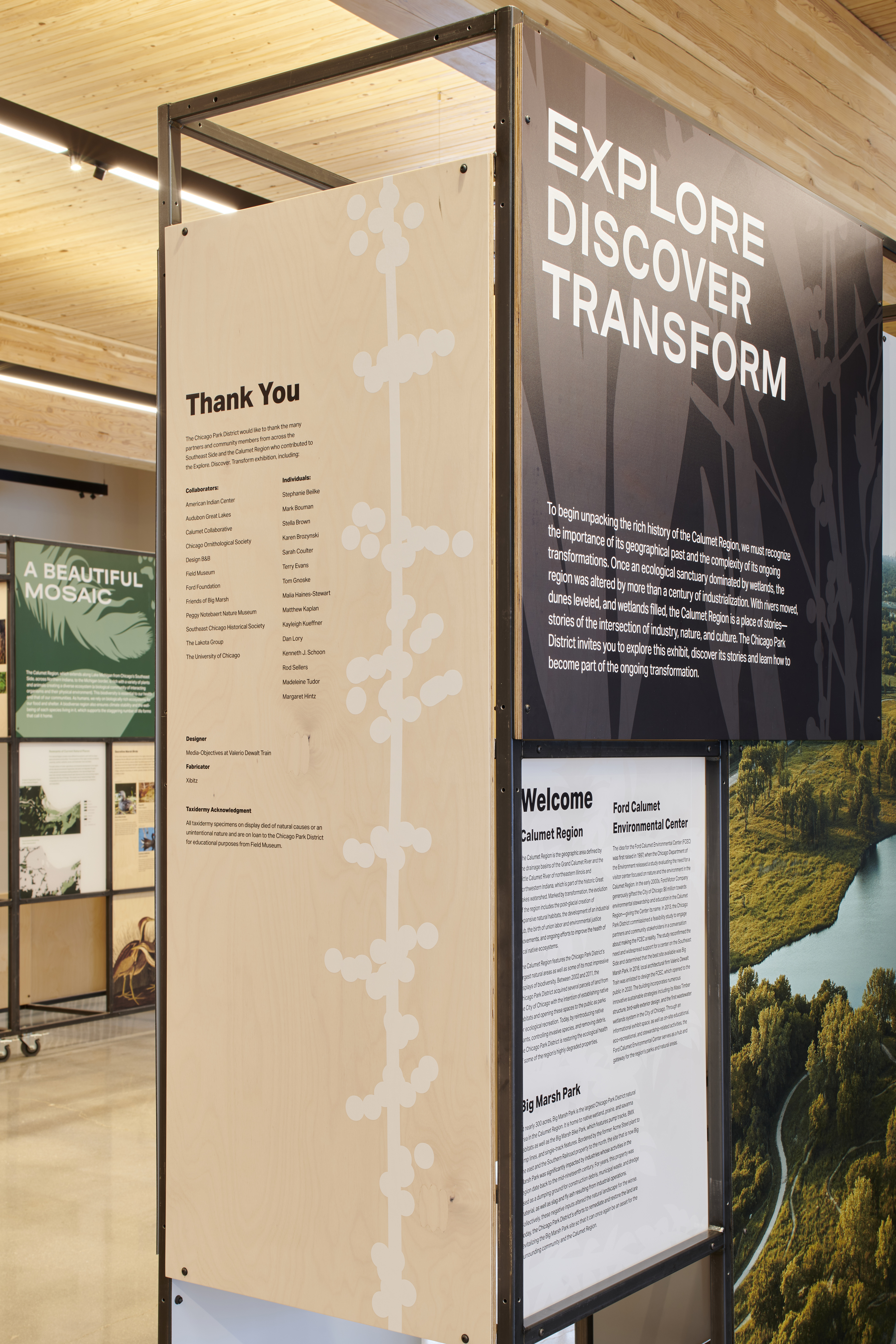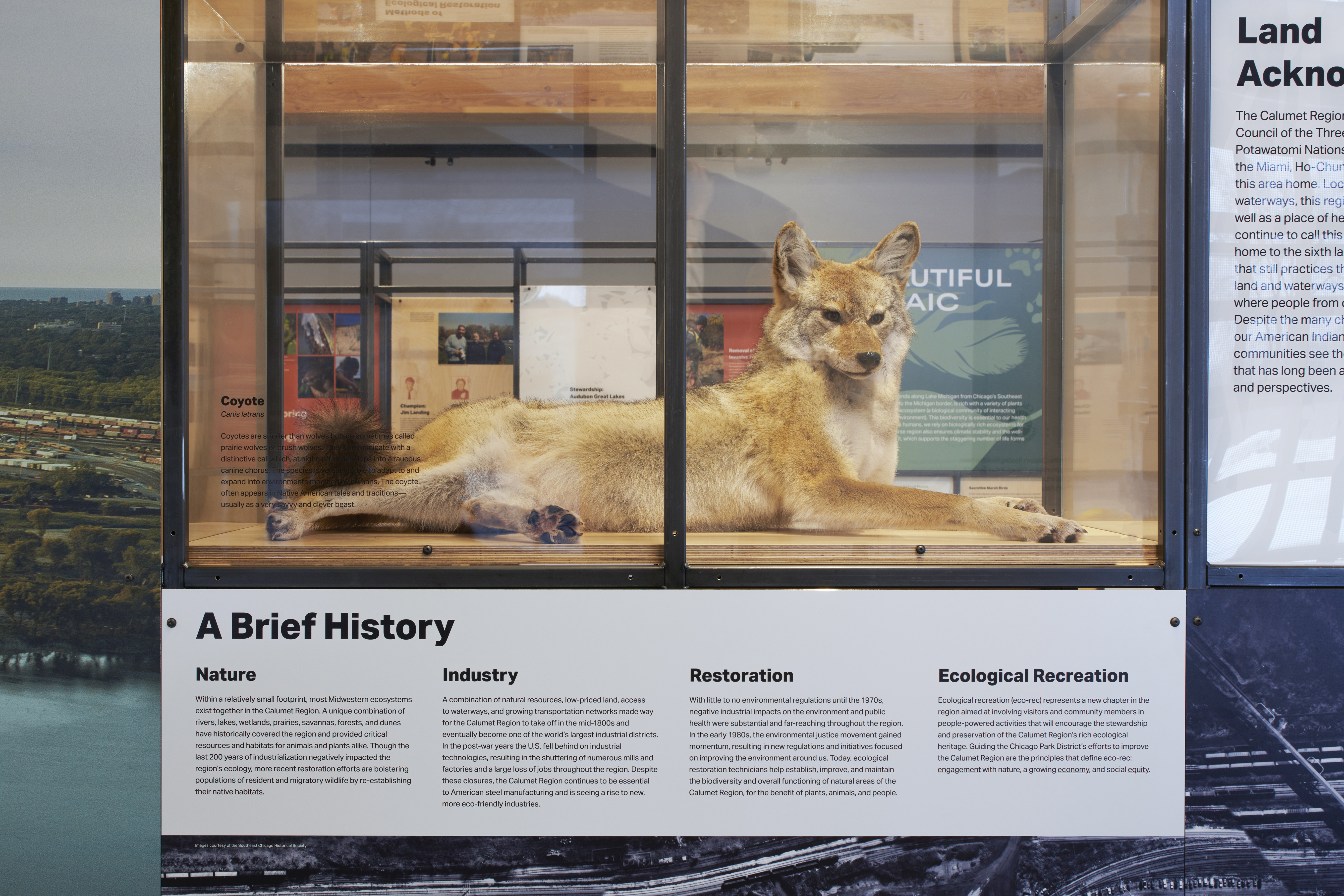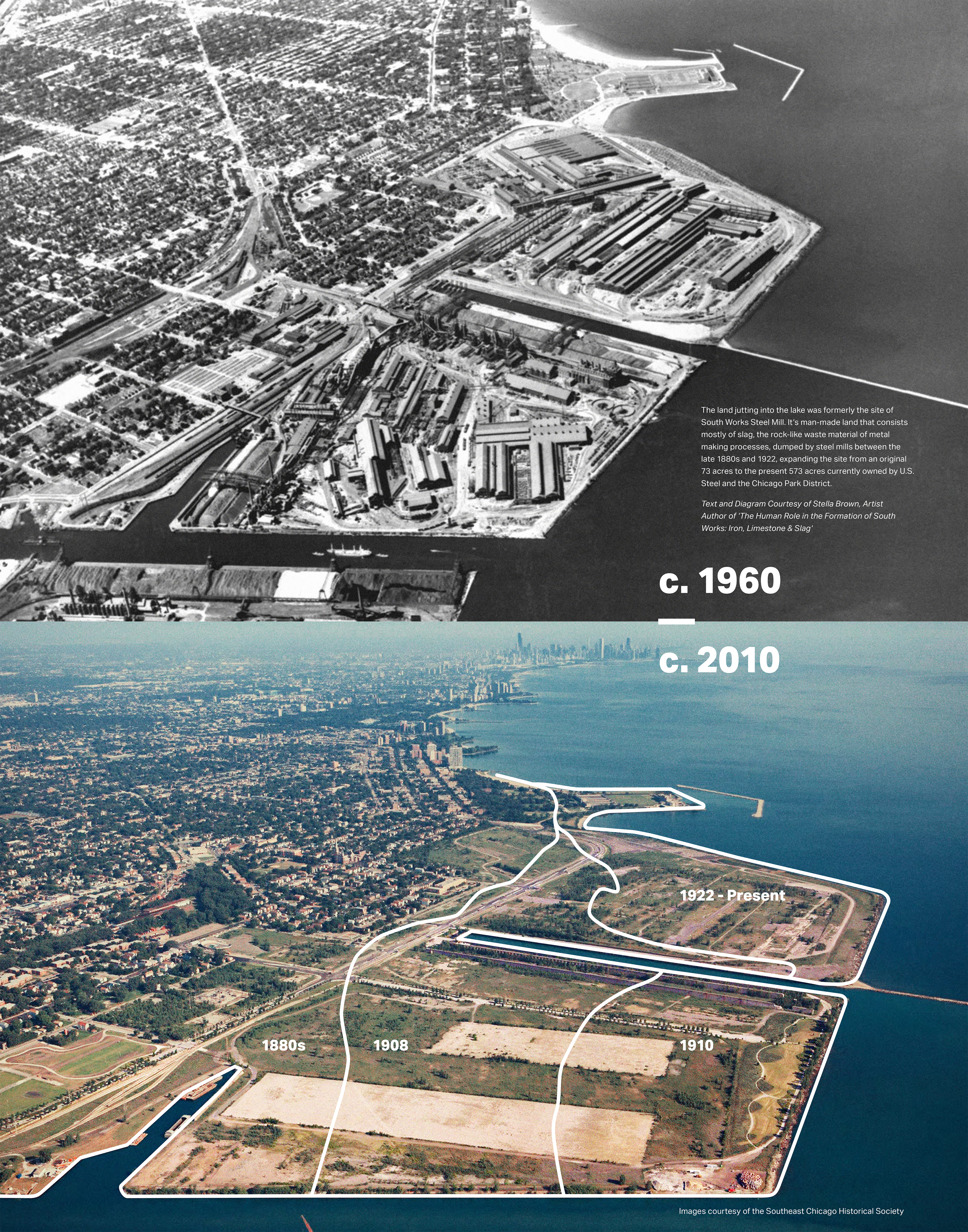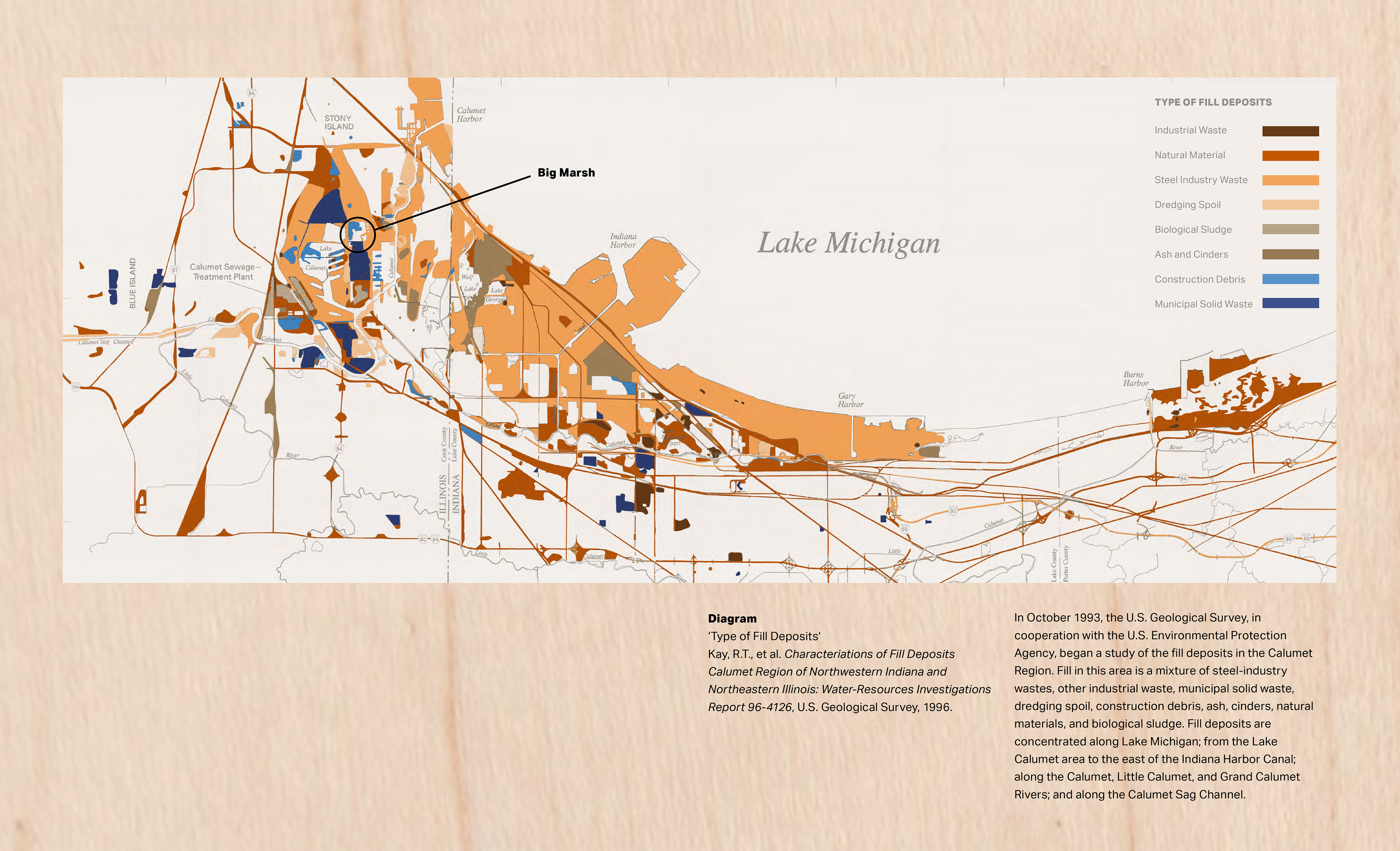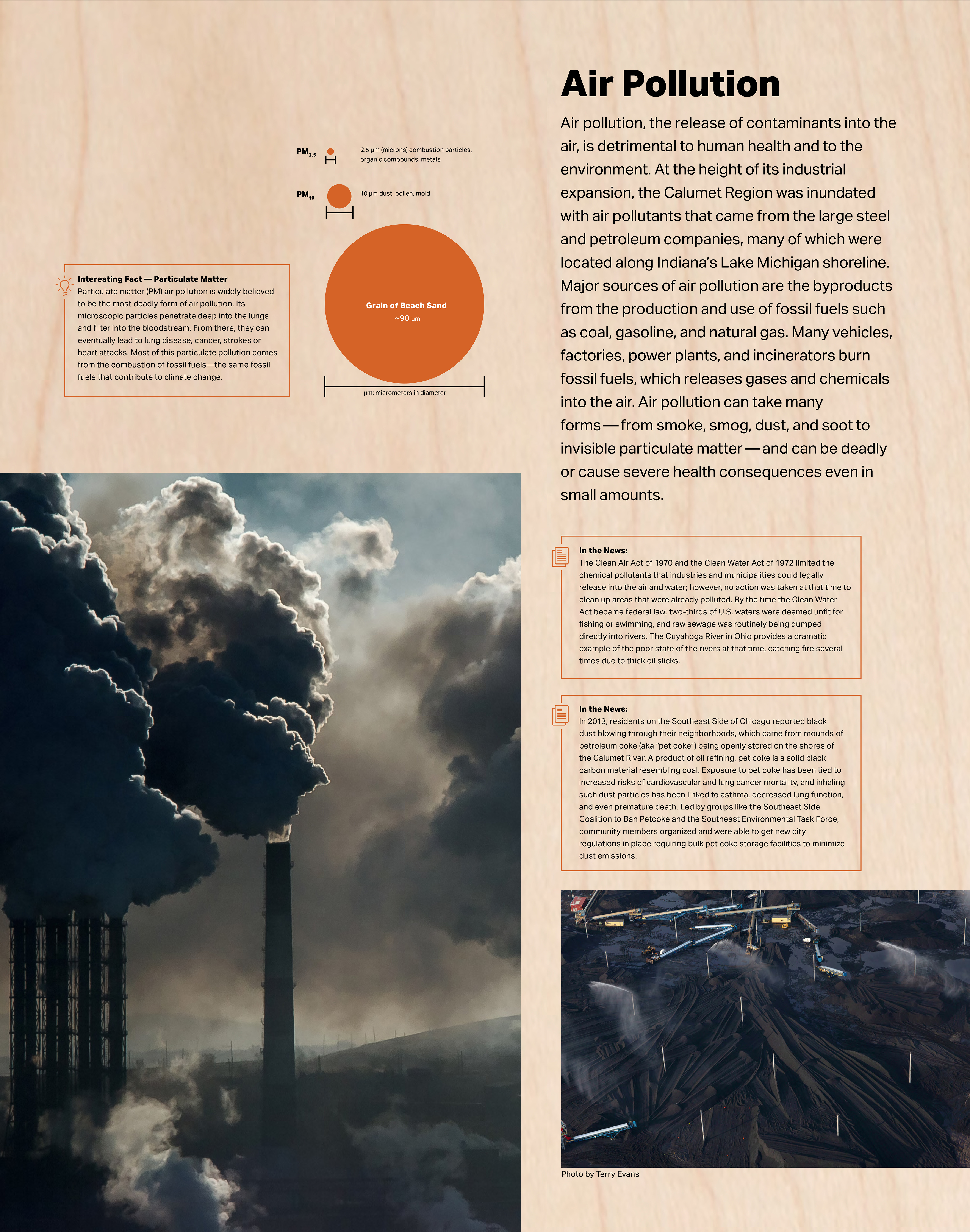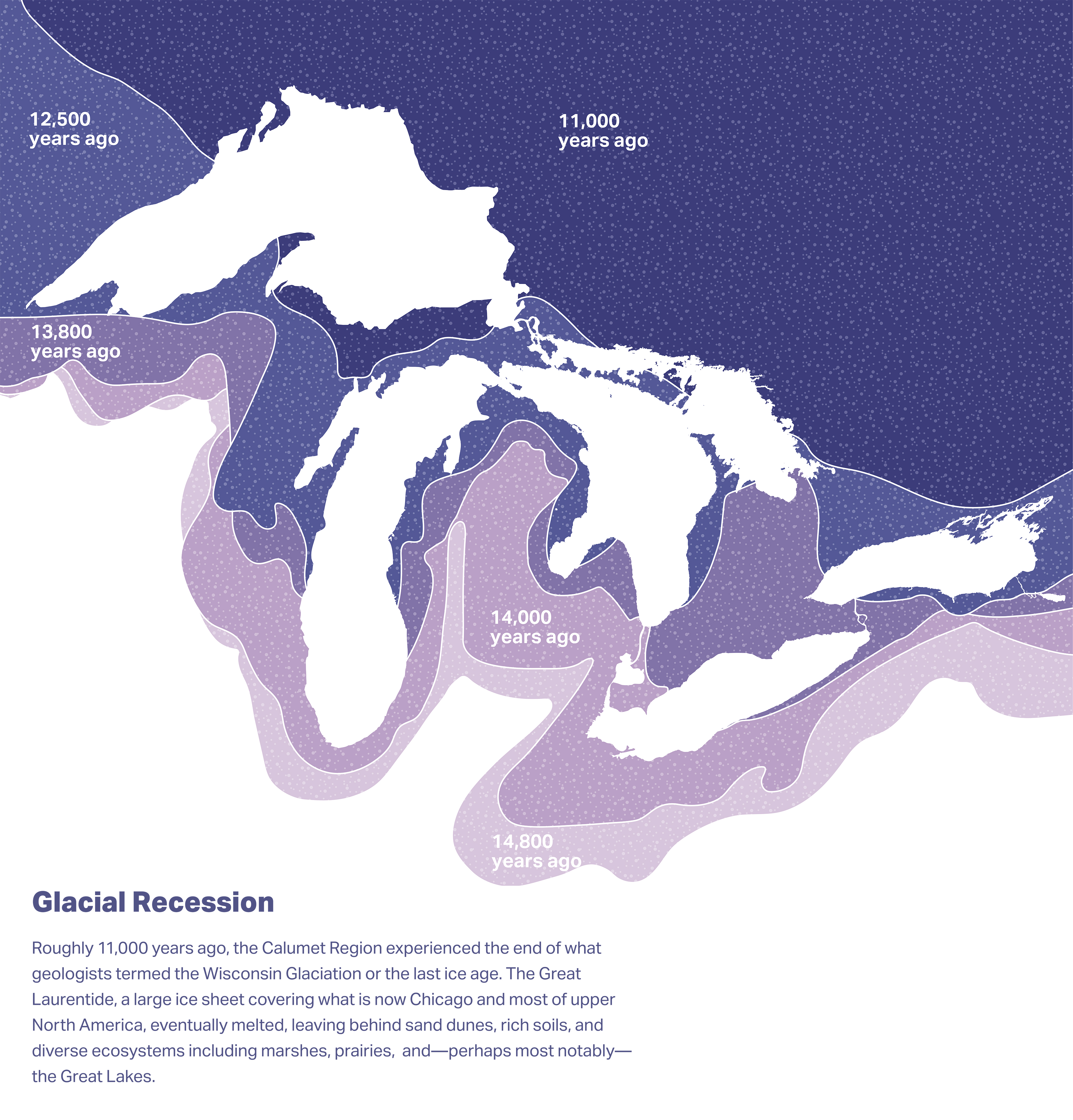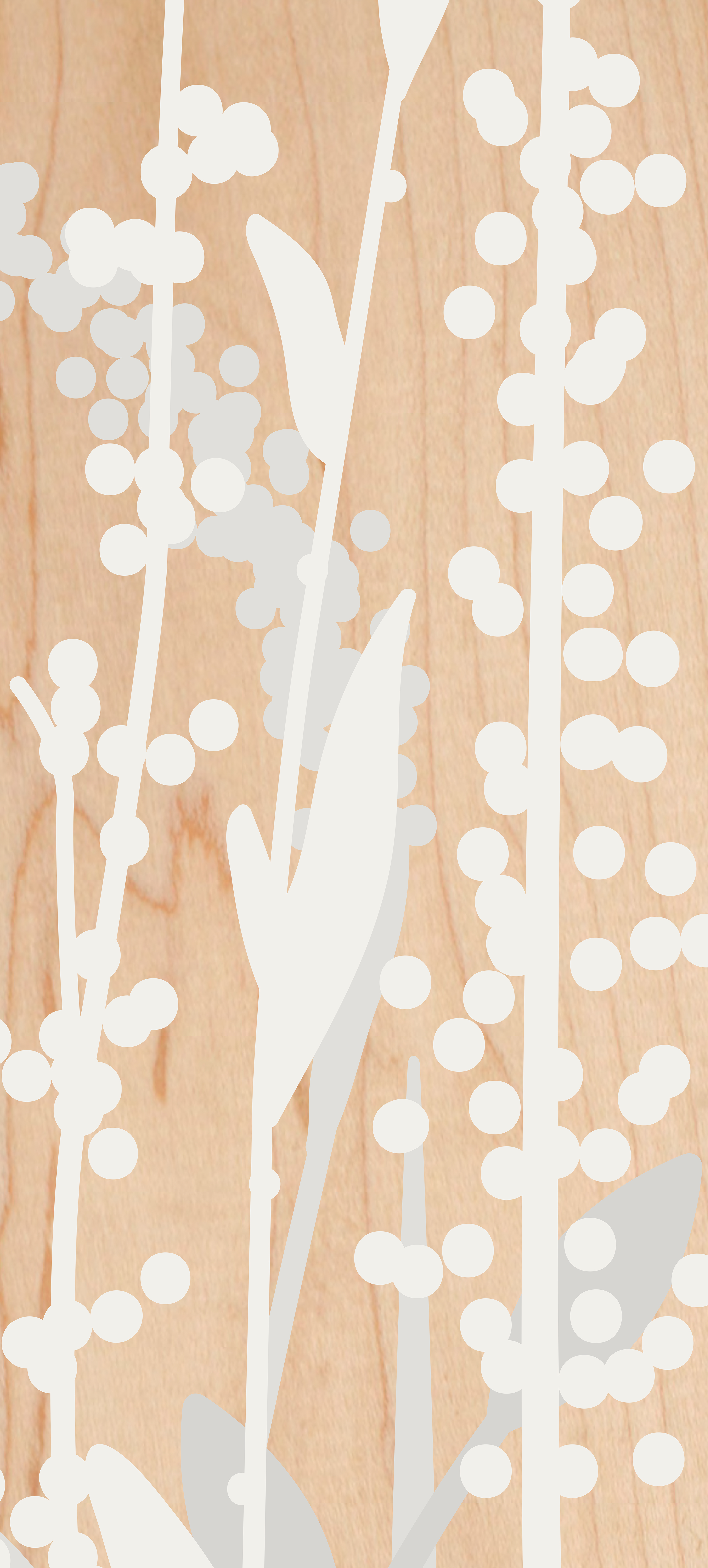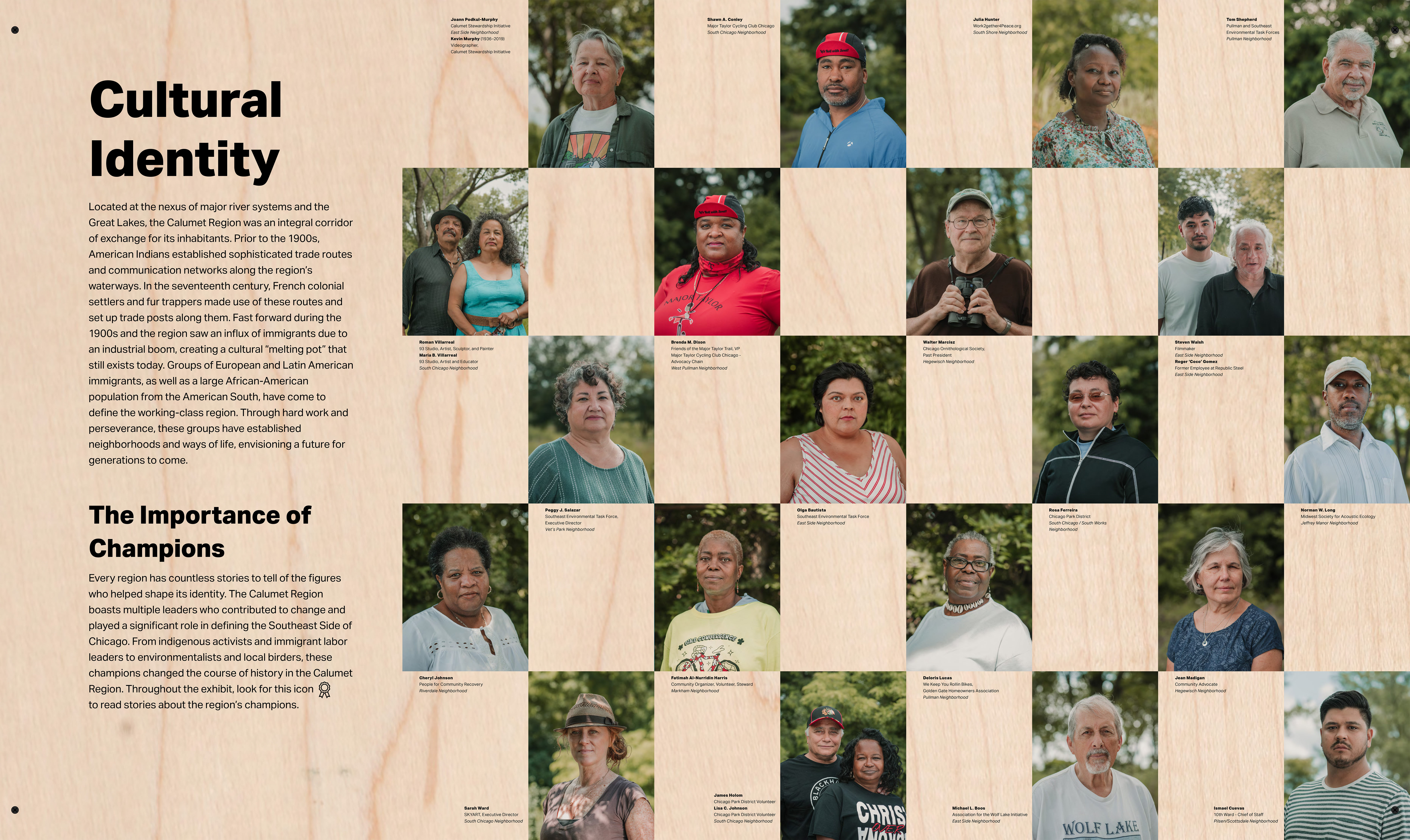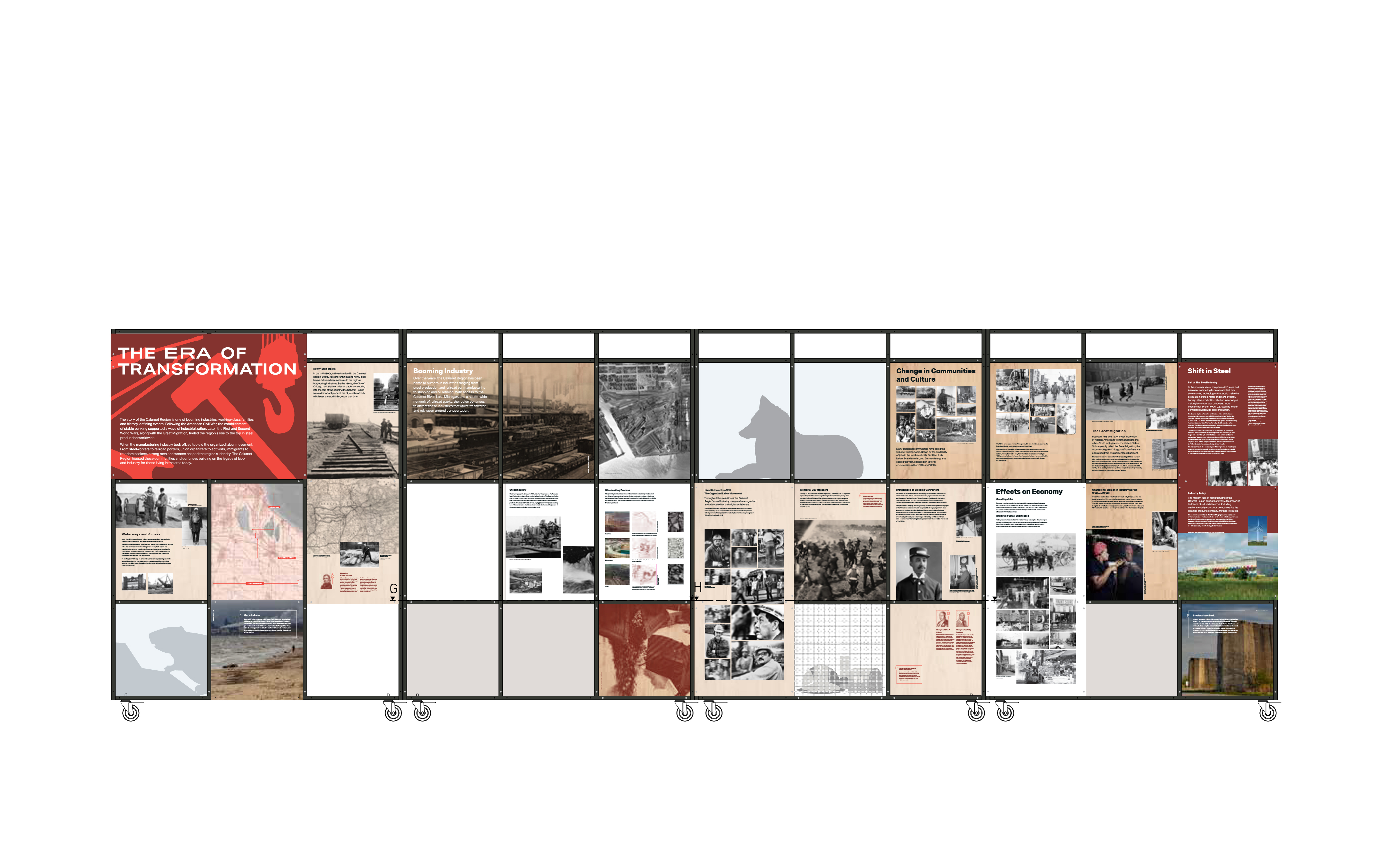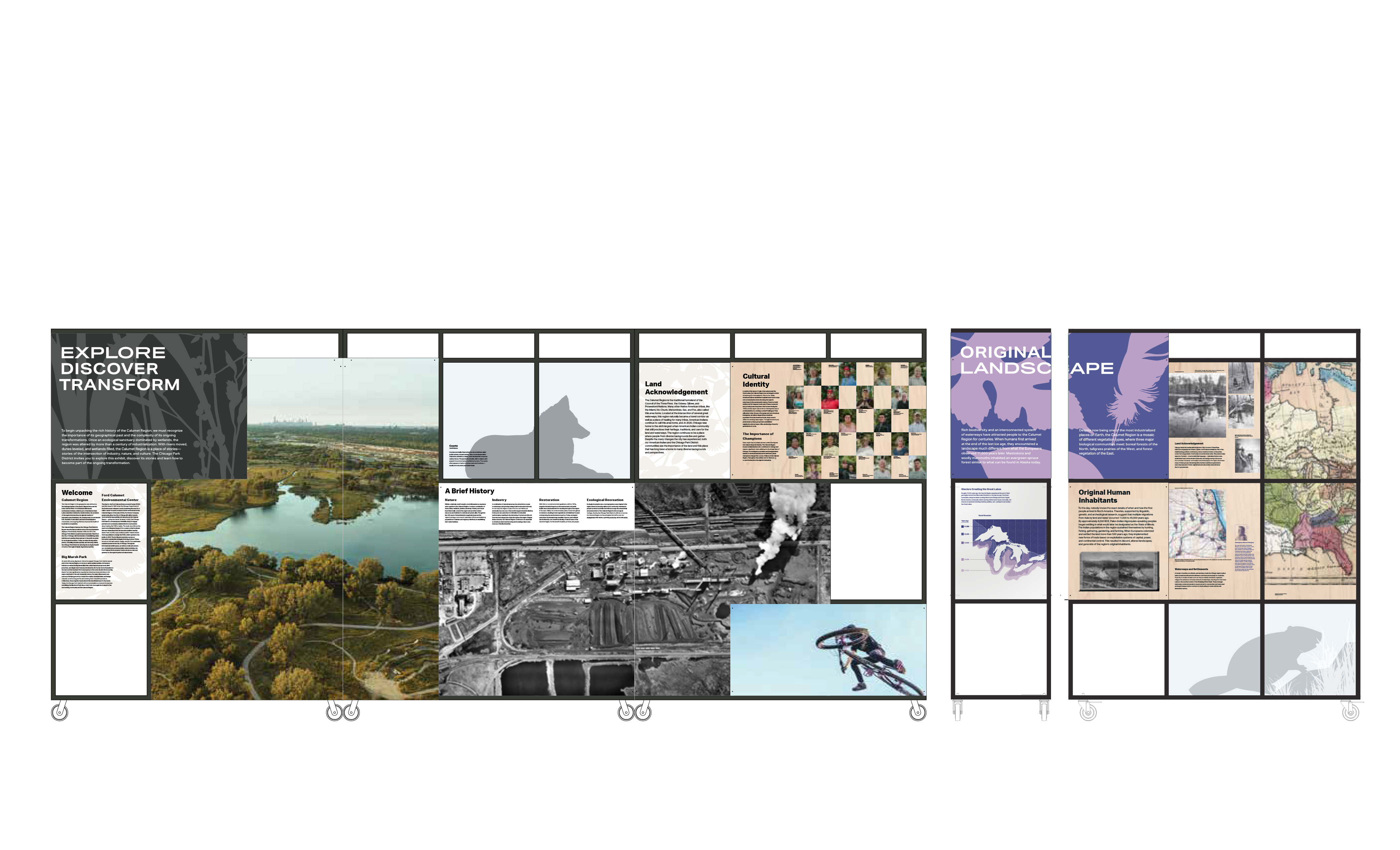Ford Calumet Environmental Center at Big Marsh
The Calumet Region in Chicago’s Southeast Side once had a collection of thriving wetlands, migratory animals, and diverse native vegetation until the turn of the 20th century when industry boomed. Toxins and slag, a by-product of extracting precious metals from ore, became a part of the Big Marsh landscape. This continued until the 1970s, when community leaders and environmental activists successfully pushed for regulated industrial practices. Now, restorative efforts have aimed to set Big Marsh on a new course where industry, nature and culture can safely coexist and continue the legacy of the people who made that possible.
Big Marsh Park is home to a 45-acre bike park and a series of walking trails that provide eco-recreation opportunities in Chicago’s Southeast Side. At the park’s entrance a 9,300 square-foot facility named the Ford Calumet Environmental Center (FCEC) serves as both a gateway and a hub—featuring a permanent exhibit and classrooms. Media Objectives studio has partnered with various stakeholders on an exhibition space that aims to embody the historical importance of Big Marsh.
The main exhibition at the entrance houses modular, mobile steel frame structures that educate visitors about the site’s past and key characters that played a role in the development of the Calumet Region. Made of wood, steel, and acrylic panels, the exhibit’s materials are also reflective of the site’s industrial history and environmentally-responsive future. The series of mobile structures can be dismantled and stowed away, or moved toward the walls to clear the center of the exhibit for community gatherings and other activities. Each frame showcases exhibit content, from mounted graphic panels to physical objects—each explaining the history of the region through eight, highlighted time periods. Additionally, taxidermy of the animals native to the Calumet region are displayed in acrylic casings within the steel frames. A fox, huron, beavers, and various bird species show visitors the natural beauty that surrounds them in what used to be a struggling ecosystem.
A permanent display on the marsh ecosystem includes a series of 2D maps on the region and booklets that explain points of interest, highlight activities and hiking trails. A mobile 3D map provides a visual representation of the park in its entirety and its special moments. On the opposite wall of the main room, the permanent exhibit features taxidermied avian species of the region in acrylic cases, with imprinted descriptions of each bird. Wrapping the walls of the facility, nature graphics of animals, grasses, and other scenery play with the sense of scale and serve as an extension of the exhibit throughout the space.
